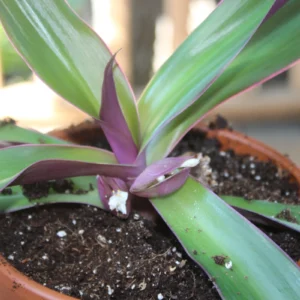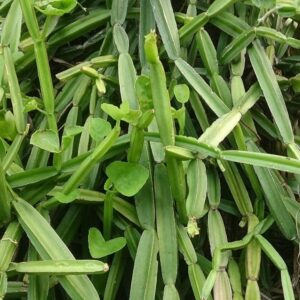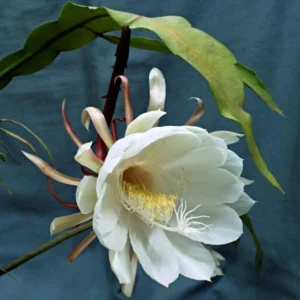Description
Hemidesmus indicus, commonly known as Indian sarsaparilla or Anantmool, is a perennial herb native to the Indian subcontinent and Southeast Asia. It belongs to the Apocynaceae family. The plant has been used in traditional medicine for centuries, particularly in Ayurvedic and Siddha practices, for its various health benefits.
Key Characteristics:
Scientific Name: Hemidesmus indicus
Common Names: Indian sarsaparilla, Anantmool, Sarsaparilla root
Family: Apocynaceae
Type: Perennial herb
Appearance: The plant typically has slender, creeping stems with small, ovate leaves. It produces small, fragrant flowers that are generally white or pale in color.
Uses:
Medicinal: The root of Hemidesmus indicus is commonly used for its detoxifying, anti-inflammatory, and diuretic properties. It is believed to be beneficial for treating various conditions such as:
Skin disorders like eczema and psoriasis
Blood purification
Fever
Digestive issues
Respiratory problems
Joint pain
Traditional Uses: In traditional medicine, it is often consumed in the form of decoctions, powders, or in herbal preparations mixed with other medicinal herbs. The root is especially valued for its cooling properties and is used to alleviate heat-related conditions in the body.
Anti-microbial & Antioxidant: Studies have shown that Hemidesmus indicus may possess antioxidant and antimicrobial effects, making it useful in combating infections and promoting general health.
Ayurvedic: It is a key component in some Ayurvedic formulations for balancing doshas (especially Pitta) and improving overall vitality.
Important Notes:
Safety: While the plant has a long history of use, it’s important to consult with a healthcare professional before using it, especially in concentrated forms or over long periods, to avoid any side effects or interactions with other treatments.






Reviews
There are no reviews yet.